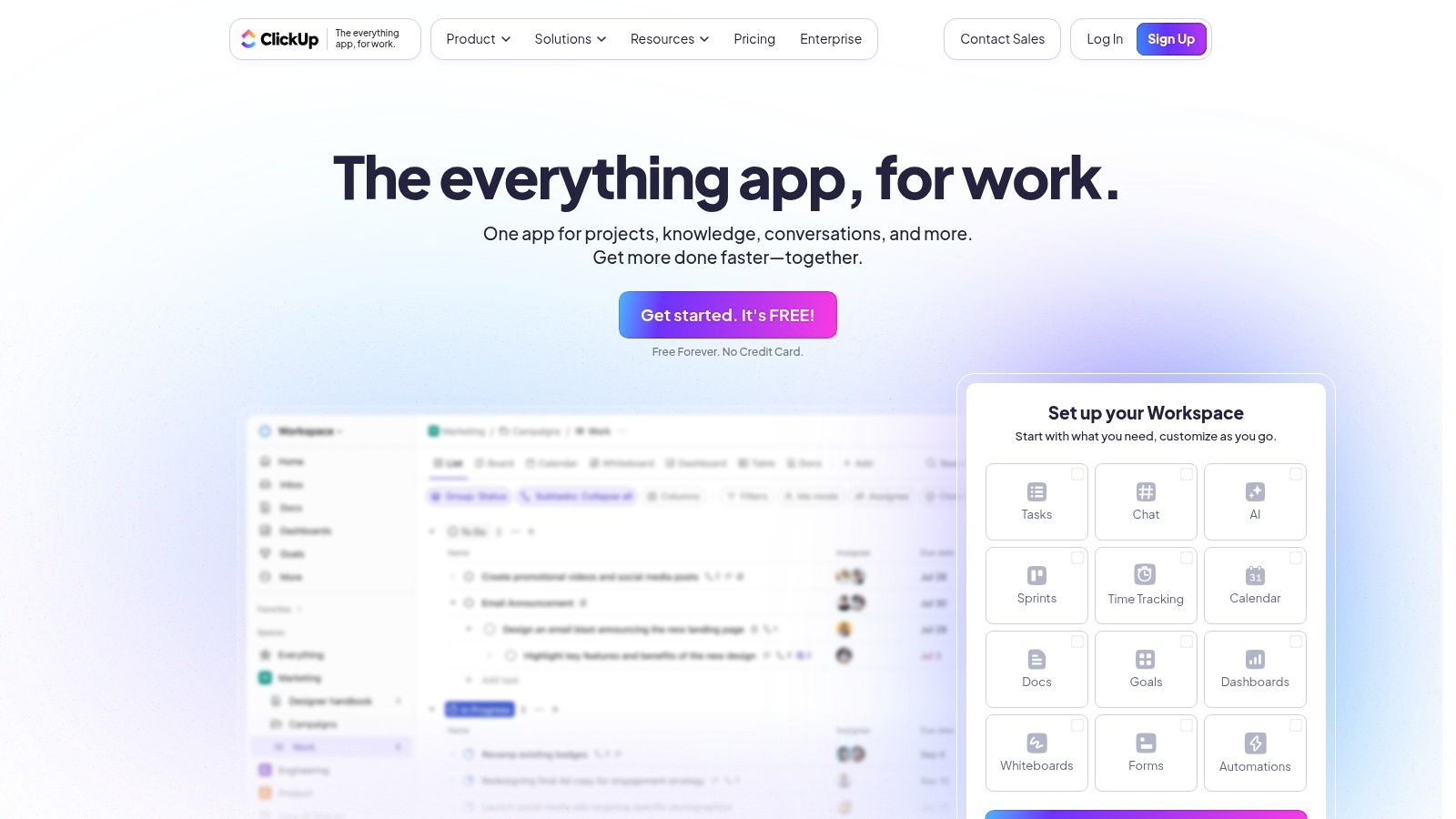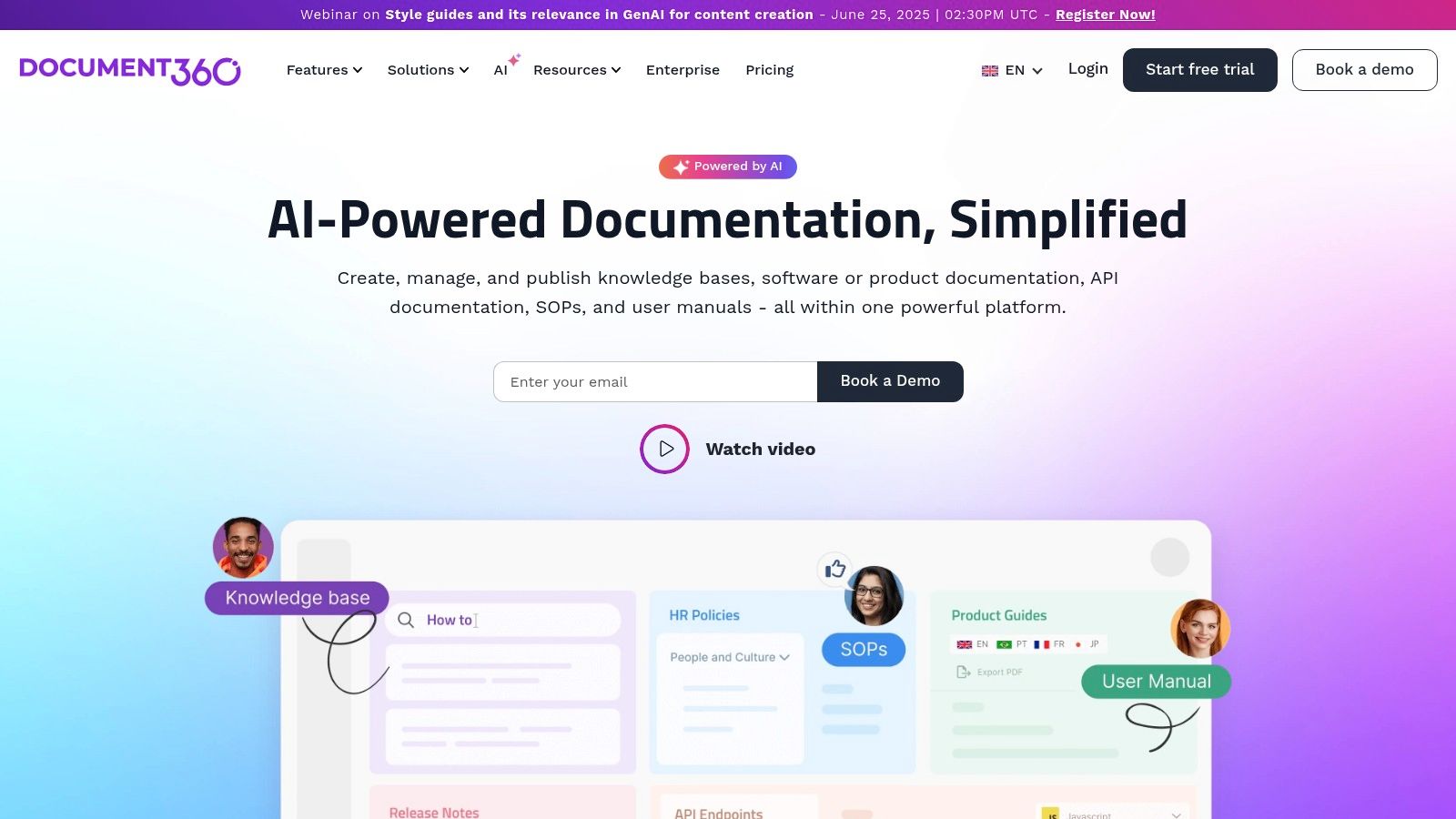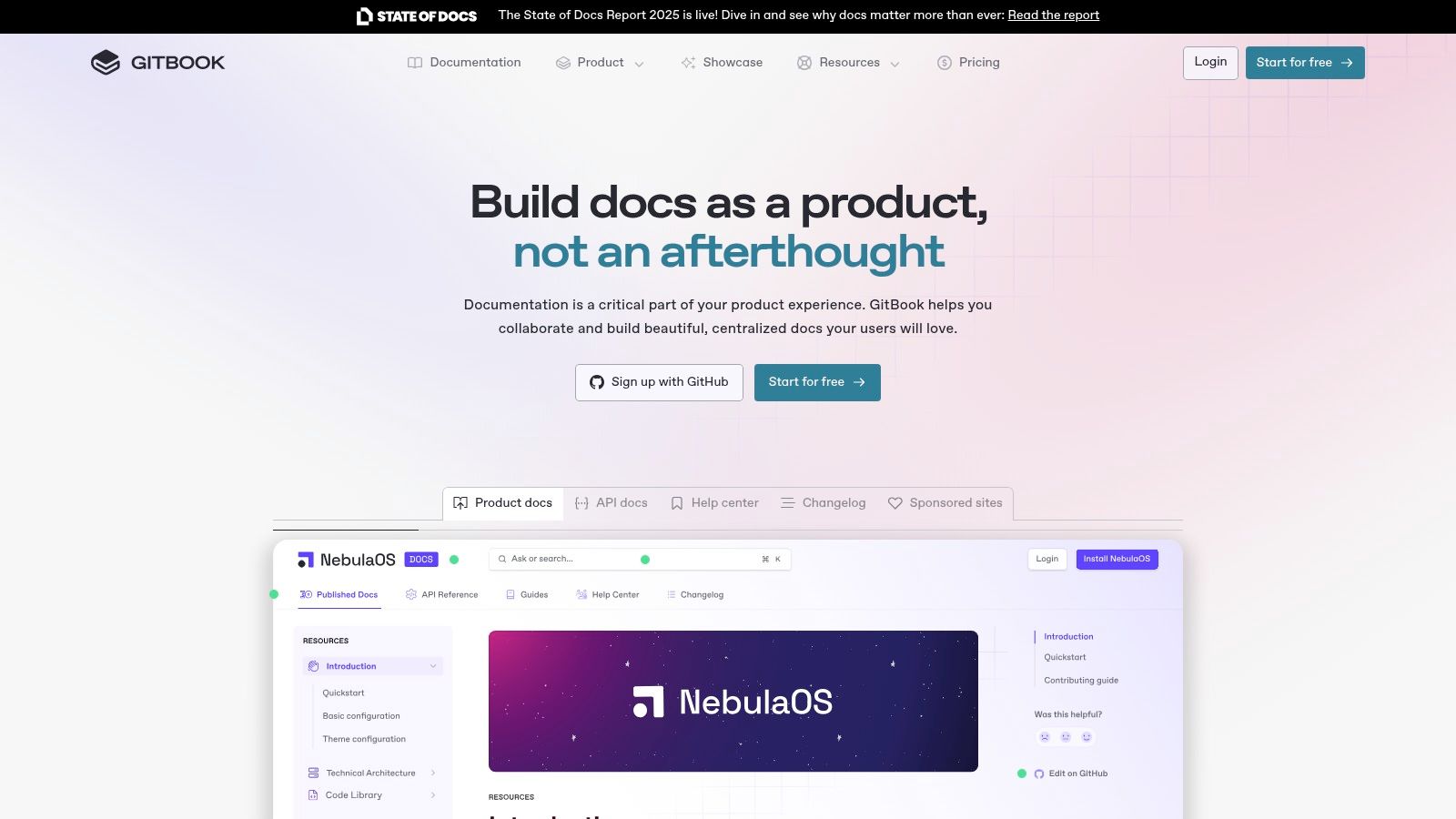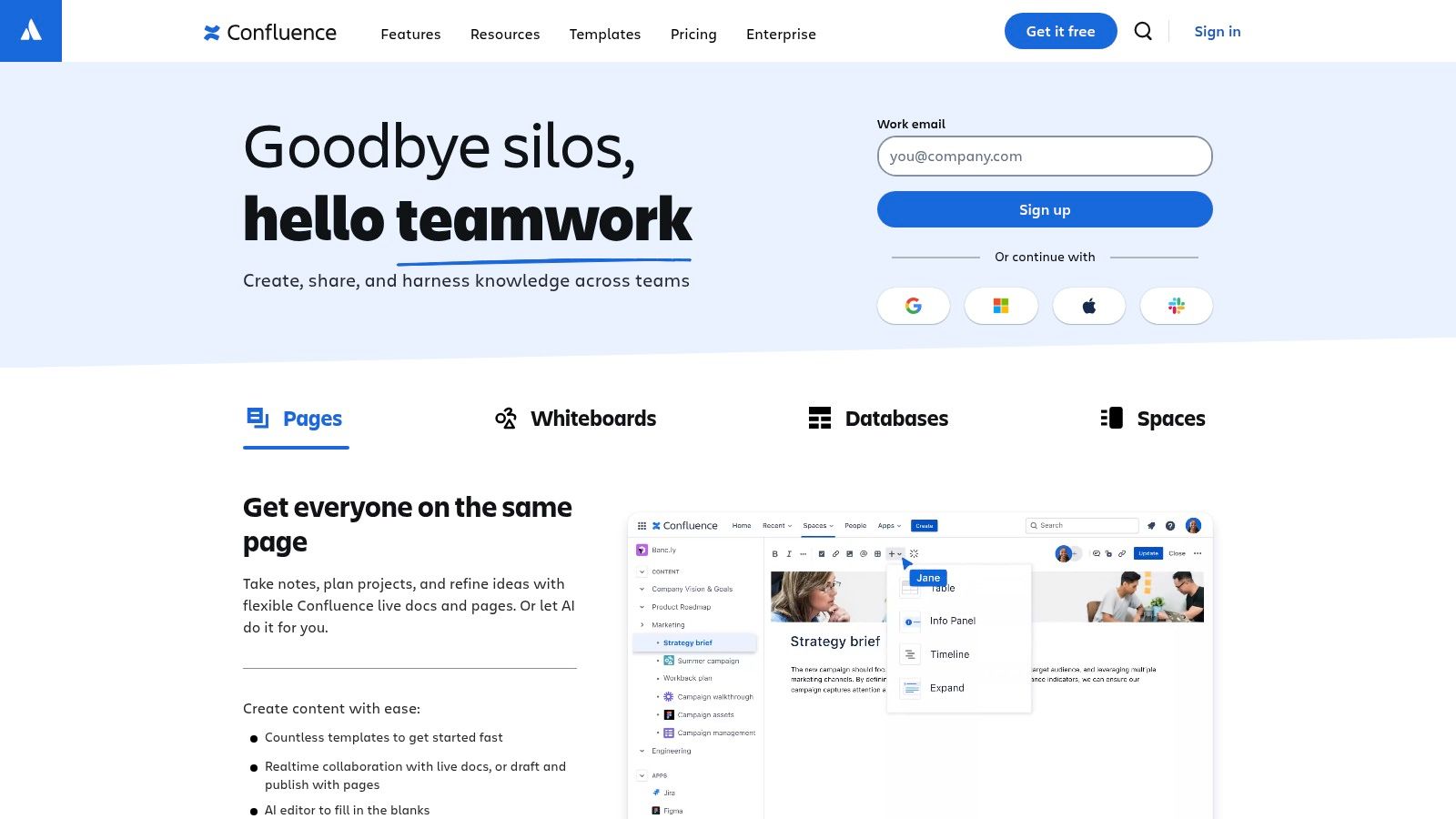Discover the 12 best software documentation tools for 2025. In-depth reviews, pros, cons, and pricing to help you choose the right solution for your team.
In modern software development, documentation is not an afterthought; it’s the operational backbone of efficient, scalable, and maintainable projects. Outdated or poorly managed documentation creates immediate problems: siloed knowledge, extended onboarding times for new engineers, and costly development errors rooted in misunderstanding. Selecting the right software documentation tools is therefore a strategic decision that directly impacts developer productivity, cross-team collaboration, and overall product quality. The wrong tool introduces friction, while the right one acts as a force multiplier for your entire engineering organization.
This guide moves beyond generic marketing claims to provide an in-depth, analytical review of the top platforms available. We will dissect the core functionalities of tools ranging from knowledge bases like Confluence and Document360 to developer-centric solutions like GitBook and Read the Docs. The goal is to equip you with the insights needed to make an informed choice.
Instead of just listing features, we will explore practical, real-world use cases and offer an honest assessment of each tool’s strengths and limitations. You will gain a clear understanding of:
By the end of this comprehensive analysis, you will be able to confidently match a tool’s capabilities to your team’s specific workflow, technical stack, and budget. Whether you are a solo developer, a fast-growing startup, or a large enterprise, this resource provides the clarity required to select the software documentation tools that will best serve your project’s long-term success.
DocuWriter.ai positions itself as more than just a documentation generator; it’s a comprehensive AI-powered toolkit aimed at accelerating the entire development lifecycle. Its core strength lies in its ability to automatically generate precise code and API documentation, directly addressing a significant pain point for developers and engineering teams. This automation is designed to prevent documentation from becoming obsolete, a common issue in agile development environments where codebases change rapidly.

Unlike many single-purpose software documentation tools, DocuWriter.ai bundles several high-value features into one platform. Its capacity to generate UML diagrams from code provides a visual architecture overview, while the intelligent code refactoring and AI-driven test suite creation features help improve code quality and maintainability. This multifaceted approach makes it particularly valuable for tech startups and small to mid-sized businesses looking to maximize developer productivity and standardize their engineering practices without investing in multiple separate tools.
Pros:
Cons:
Pricing: Subscription plans range from a Starter option at 166/year, with tailored solutions for professionals and enterprises. For a deeper dive, you can explore their insights on automated code documentation.
Website: DocuWriter.ai
ClickUp is a comprehensive project management platform that integrates robust documentation capabilities directly into its ecosystem. While not a standalone documentation tool, its Docs feature allows teams to create, collaborate on, and connect knowledge directly to workflows. This approach is powerful for teams that want to centralize their work, linking project requirements, technical specifications, and release notes directly to the tasks and epics they describe. It eliminates the need to switch between a project manager and a separate knowledge base, creating a single source of truth for the entire development lifecycle.

Unlike dedicated software documentation tools that focus solely on reference materials, ClickUp’s strength is context. A document isn’t just a static page; it’s an interactive part of a project. You can mention tasks, assign comments, and embed views, making it ideal for creating dynamic project charters, sprint planning documents, or user guides. This integrated nature makes it a compelling choice for agile development teams who need their documentation to evolve in lockstep with their project’s progress, ensuring that plans and execution remain tightly aligned within one platform.
Pros:
Cons:
Pricing: ClickUp offers a generous Free Forever plan. Paid plans start with Unlimited at 12 per member/month, with custom pricing for Enterprise.
Website: ClickUp
Document360 is a dedicated knowledge base platform designed for creating, managing, and publishing extensive self-service documentation. It excels at building user-facing content like help guides, FAQs, and technical manuals, distinguishing itself from code-centric software documentation tools. The platform focuses on providing a polished and professional end-user experience, emphasizing ease of use for both technical writers and the consumers of the documentation.

Its strength lies in a feature set tailored for content governance and user engagement. With a powerful Markdown editor, robust version control, and in-depth analytics, it allows teams to maintain content quality and track its effectiveness. This makes it an ideal solution for SaaS companies and software enterprises that need to reduce support ticket volume by empowering users to find answers independently. The platform’s advanced customization capabilities ensure the knowledge base can seamlessly match a company’s branding.
Pros:
Cons:
Pricing: Plans start at $149 per project/month for the Standard tier, scaling up to an Enterprise plan with custom pricing. A free trial is available.
Website: Document360
GitBook has carved out a niche as a modern documentation platform where usability and collaboration are paramount. It leverages the familiarity of Git for version control while providing a clean, user-friendly interface that feels more like a collaborative word processor than a traditional developer tool. This approach makes it highly accessible for both technical and non-technical team members, allowing product managers, writers, and engineers to contribute to the same documentation space seamlessly.

Where GitBook truly excels is in bridging the gap between developer workflows and public-facing documentation. Its tight integration with GitHub allows teams to sync their documentation directly with their code repositories, ensuring that changes are tracked and can be merged with confidence. Unlike more complex software documentation tools that require extensive setup, GitBook simplifies the process of creating beautiful, organized knowledge bases, API references, and product manuals, making it a favorite among startups and open-source projects.
Pros:
Cons:
Pricing: GitBook offers a free plan for personal projects and open-source teams. Paid plans start with the Plus plan at $8/user/month and scale to a custom Enterprise solution.
Website: GitBook
Confluence by Atlassian is a heavyweight in the world of team collaboration, often serving as the central knowledge hub for organizations. While not exclusively a software documentation tool, its deep integration with the Atlassian ecosystem, particularly Jira, makes it a default choice for many engineering teams. It excels at creating and organizing project plans, meeting notes, technical specifications, and release notes in a single, shared workspace.

Unlike tools focused purely on code-level documentation, Confluence shines in creating a broader context around the software development lifecycle. Its powerful rich text editor and extensive template library allow teams to document everything from high-level product requirements to detailed troubleshooting guides. The platform’s strength lies in its ability to link Jira issues directly to documentation pages, providing a clear, traceable path from a task or bug to its corresponding technical documentation and solution.
Pros:
Cons:
Pricing: Confluence offers a Free plan for up to 10 users. Paid plans start with the Standard tier at $6.05/user/month and scale up to Premium and Enterprise tiers with advanced features. To ensure your content is effective, review these software documentation best practices.